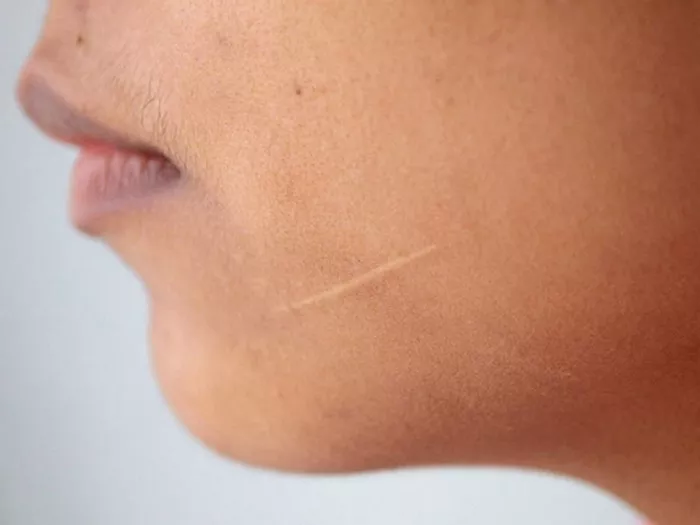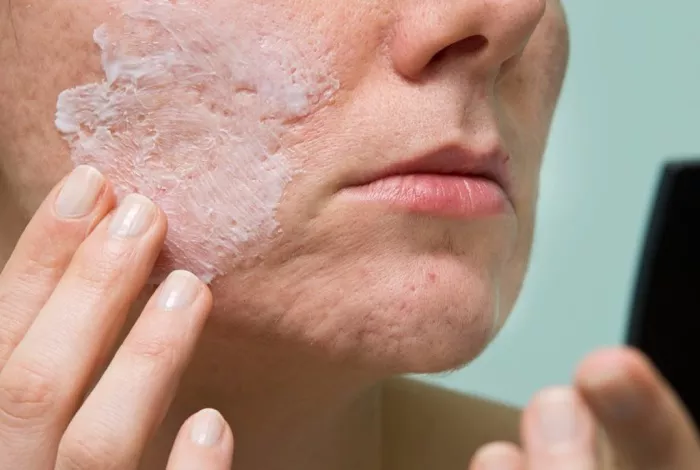The presence of scars, especially old ones, can be a lasting reminder of past injuries or surgeries. As advancements in skincare and dermatology continue to progress, individuals are increasingly seeking effective solutions to minimize the appearance of old scars. This comprehensive guide navigates through the myriad of options, exploring the question: what is the best scar treatment for old scars? From topical treatments to medical procedures, we delve into the diverse landscape of scar management to provide insights for those on a quest for smoother, more refined skin.
Understanding Scar Formation
The Scar Formation Process
Before delving into scar treatments, it’s crucial to understand how scars form. Scars are a natural part of the body’s healing process after injury or surgery. When the skin is wounded, the body initiates a cascade of events to repair the damage. Initially, inflammation sets in, and the body produces collagen fibers to mend the wound. However, the composition and arrangement of collagen in the scar tissue often differ from that of the surrounding skin, resulting in a visible scar.
Types of Scars
Scars come in various forms, including hypertrophic scars, keloids, atrophic scars, and contracture scars. Hypertrophic scars are raised and red, often confined to the boundaries of the original wound. Keloids, on the other hand, extend beyond the injury site and can be more challenging to manage. Atrophic scars, characterized by a loss of tissue, are commonly seen in acne scars. Contracture scars, typically caused by burns, can lead to tightness in the skin.
Topical Treatments
Silicone-based Products
Silicone-based products, such as gels and sheets, have long been recognized for their efficacy in scar management. These products create a protective barrier over the scar, helping to maintain moisture levels and modulate collagen production. Silicone treatments are considered safe and non-invasive, making them suitable for at-home use. Regular application can contribute to softening and flattening the appearance of old scars over time.
Vitamin E Creams
Vitamin E is renowned for its antioxidant properties and its potential role in promoting skin healing. Vitamin E creams and oils are often recommended for scar treatment. While some individuals report positive outcomes with vitamin E, it’s essential to approach its use cautiously, as studies have shown that in some cases, it may cause skin irritation. Consulting with a dermatologist is advisable to determine the suitability of vitamin E for specific scar types.
Advanced Topical Solutions
Corticosteroid Creams
For certain types of scars, such as keloids and hypertrophic scars, corticosteroid creams may be prescribed. These creams help reduce inflammation and can soften and flatten raised scars. However, they may not be suitable for all scar types, and their use should be supervised by a healthcare professional due to potential side effects.
Retinoid Creams
Retinoids, derivatives of vitamin A, are commonly used in skincare for their exfoliating and collagen-promoting properties. Prescription-strength retinoid creams can be beneficial in improving the texture and appearance of certain scars. They work by promoting cell turnover and stimulating collagen production. It’s important to note that retinoids can increase sensitivity to the sun, so sun protection is crucial when using these creams.
Innovative Approaches
Laser Resurfacing
Laser therapy has emerged as a powerful tool in scar treatment, particularly for addressing texture irregularities. Laser resurfacing involves using concentrated beams of light to remove the top layer of skin, stimulating collagen production and promoting a smoother skin surface. This approach is often effective for atrophic scars, including those caused by acne.
Fractional Laser Treatment
Fractional laser treatment is a variation of laser therapy that targets only a fraction of the skin at a time. This allows for faster healing and reduced downtime compared to traditional laser resurfacing. Fractional lasers create micro-injuries in the skin, triggering a natural healing response that can improve the appearance of scars over multiple sessions.
Injectable Solutions
Dermal Fillers
For certain types of atrophic scars, such as those resulting from acne, dermal fillers can be a viable option. Fillers, often containing substances like hyaluronic acid, are injected beneath the scar to elevate it to the level of the surrounding skin. This helps to create a smoother surface and reduce the visibility of the scar. The effects are temporary, and repeated sessions may be required.
Corticosteroid Injections
In cases of hypertrophic scars and keloids, corticosteroid injections may be administered directly into the scar tissue. This approach aims to reduce inflammation and inhibit the overproduction of collagen. Multiple sessions may be needed, and the effectiveness can vary from person to person.
Surgical Interventions
Scar revision surgery is considered for scars that are particularly bothersome or functionally limiting. The goal of scar revision is to improve the appearance of the scar or make it less noticeable. This may involve excising the existing scar and rejoining the skin in a manner that minimizes tension and promotes optimal healing. While scar revision surgery can yield positive outcomes, it’s essential to note that it may result in a new scar, albeit potentially less noticeable.
Z-plasty and W-plasty
Z-plasty and W-plasty are surgical techniques used to reposition scars for improved aesthetics. These procedures involve creating Z or W-shaped incisions, redistributing tension along natural skin lines, and altering the direction of the scar. These techniques can be particularly effective for scars that are raised or tethered.
Emerging Technologies
Microneedling
Microneedling, or collagen induction therapy, involves using a device with fine needles to create controlled micro-injuries in the skin. This stimulates the body’s natural healing response and promotes collagen production. Microneedling has shown promise in improving the texture and appearance of scars, including atrophic acne scars. The procedure can be performed in-office, and multiple sessions are typically recommended for optimal results.
Radiofrequency Microneedling
Combining microneedling with radiofrequency energy represents an advanced approach to scar treatment. Radiofrequency microneedling delivers heat energy to the deeper layers of the skin, enhancing collagen remodeling. This dual-action treatment can be effective for a range of scars and is associated with minimal downtime.
Holistic Approaches
Aloe Vera Gel
Aloe vera is renowned for its soothing and anti-inflammatory properties. Applying pure aloe vera gel to scars may help reduce redness and inflammation, particularly in the early stages of scar formation. While aloe vera may not eliminate scars entirely, it can contribute to overall skin health.
Rosehip Seed Oil
Rich in vitamins and antioxidants, rosehip seed oil is often touted for its potential in improving the appearance of scars. The oil is believed to promote skin regeneration and hydration. While research on its efficacy is limited, some individuals incorporate rosehip seed oil into their skincare routines for scar management.
Considering Individual Factors
Tailoring Treatment to Scar Type
The effectiveness of scar treatments varies based on the type of scar, its location, and individual skin characteristics. What works well for one person may not yield the same results for another. Consulting with a dermatologist or a qualified skincare professional is crucial for a personalized approach to scar treatment. A thorough assessment allows for the selection of interventions tailored to the specific characteristics of the scar.
Managing Expectations and Patience
It’s important for individuals seeking scar treatment to manage their expectations and understand that complete scar removal may not always be achievable. The goal is often to improve the appearance of the scar, making it less noticeable or more consistent with the surrounding skin. Patience is key, as many treatments require time to yield visible results.
Conclusion
In conclusion, the quest for the best scar treatment for old scars is a nuanced journey that involves navigating through a multitude of options. From topical treatments and advanced therapies to surgical interventions and holistic approaches, the landscape of scar management is diverse and continually evolving. Each individual’s skin and scar profile are unique, emphasizing the importance of a tailored approach.
Understanding the underlying processes of scar formation, exploring evidence-based treatments, and consulting with professionals can empower individuals to make informed decisions about their scar management journey. While scars may tell stories of the past, the evolving field of dermatology offers an array of solutions to reshape the narrative, providing hope for those seeking smoother, more resilient skin. As the science of scar treatment progresses, so too does the opportunity for individuals to embark on a path towards enhanced skin confidence and a renewed sense of well-being.
[inline_related_posts title=”You Might Be Interested In” title_align=”left” style=”list” number=”6″ align=”none” ids=”3510,3512,3514″ by=”categories” orderby=”rand” order=”DESC” hide_thumb=”no” thumb_right=”no” views=”no” date=”yes” grid_columns=”2″ post_type=”” tax=””]































